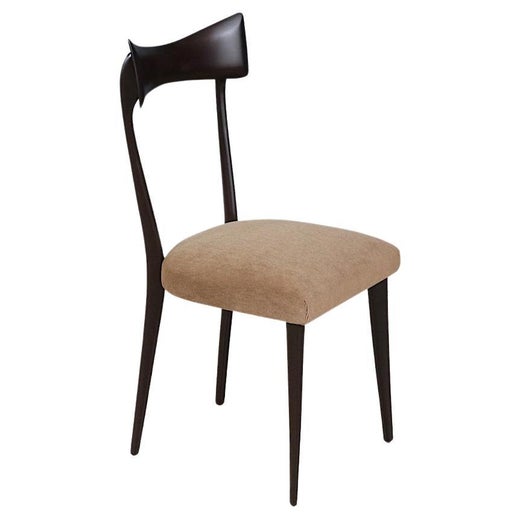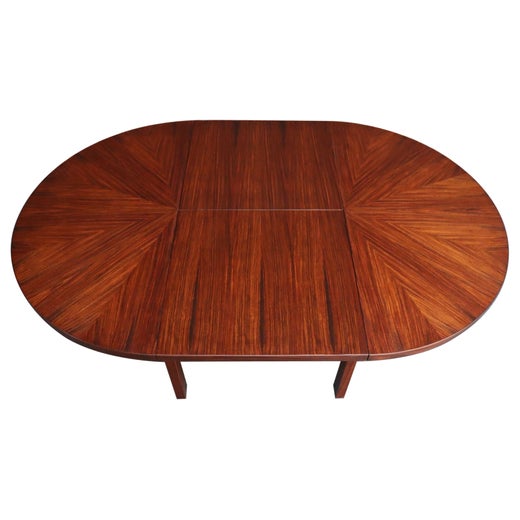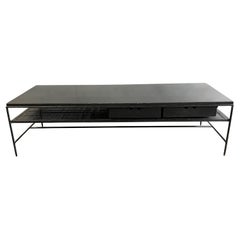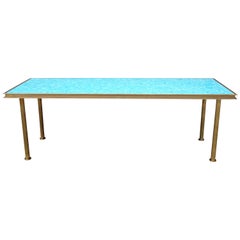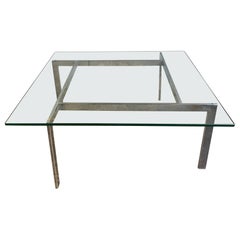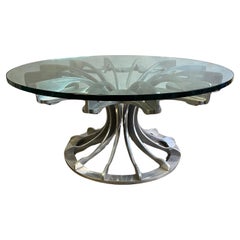Rare Mid-Century Luisa and Ico Parisi Coffee Table
About the Item
- Creator:
- Similar to:Gio Ponti (Designer)
- Dimensions:Height: 16.75 in (42.55 cm)Width: 61 in (154.94 cm)Depth: 26.75 in (67.95 cm)
- Style:Mid-Century Modern (Of the Period)
- Materials and Techniques:
- Place of Origin:
- Period:
- Date of Manufacture:1950s
- Condition:
- Seller Location:BROOKLYN, NY
- Reference Number:1stDibs: LU1793239434862
Ico Parisi
Domenico “Ico” Parisi was one half of a prolific postwar design duo he comprised with his wife, Luisa. Their furniture designs are known for running the stylistic gamut, with celebrated mid-century modern pieces ranging from elegantly skeletal — like dramatic ebonized dining chairs — to plush and shapely, like the iconic 1951 Egg chair, in a plethora of materials.
The son of an art teacher father, Ico Parisi was exposed to art at an early age. Born in 1916 in the Sicilian capital of Palermo, he and his family moved to Como in 1925. There, the young Parisi would begin to develop his interest in architecture and design. After earning a degree as a building inspector in 1936 and working as a civil engineer, Parisi took on an apprenticeship in the studio of Giuseppe Terragni, the modernist, fascist Italian architect, pioneer of the Rationalist movement and creator of the iconic Casa del Fascio.
While working for Terragni, Parisi crossed paths with such contemporary design talents as Lucio Fontana, Bruno Munari and Pietro Lingeri, though he briefly moved away from design and architecture to explore photography and film. His artistic work would soon be interrupted, however, by the outbreak of World War II, during which he served at the front before returning to Como in 1943. There, he resumed work as a designer and architect, founding two architecture groups: the Alta Quota and the Gruppo Como.
Through his creative circles, Parisi met Luisa Aiani, a former student of the prolific architect and furniture designer Gio Ponti, who was affiliated with the Alta Quota. They married in 1947 and founded the studio La Ruota — a cross between a design firm and an intellectual salon — in Como shortly thereafter. In 1950, Parisi finally completed his architectural schooling, studying under the nationalist architect Alberto Sartoris at the Athenaeum Architecture School in Lausanne, Switzerland. He and Aiani began several decades of sophisticated output, designing curved sofas upholstered in yellow velvet and armchairs with slender mahogany frames for enduring Italian manufacturers such as Cassina and others.
Much like Charles and Ray Eames in America, the Parisis worked as a team and relied on experimentation in style and material for many of their designs. Ico Parisi died in Como in 1996.
Find a collection of vintage Ico Parisi coffee tables, dining chairs and more on 1stDibs.
Ico & Luisa Parisi
The Italian architect, artist and furniture designer Ico Parisi (1916–96) and his wife and frequent collaborator, Luisa Parisi (1914–90), formed one of the most prolific and spirited European design teams of the postwar period. Together they created a magnetic aesthetic that combines the refined angularity and elegance of the work of Gio Ponti with the liveliness and lightness of the furniture of Carlo Mollino.
Ico Parisi — his first name is short for Domenico — was born and raised in Palermo. He moved to the northern Italian city of Como in the early 1930s and lived and worked there the remainder of his life. He initially studied and worked as a civil engineer, but later became an associate in the office of architect Giuseppe Terragni, a leading light of the stern and formal Rationalist design movement. Ico moved in artistic circles that included Lucio Fontana and Bruno Munari; after he married Luisa Aiani — a former student of Gio Ponti’s — in 1947 their design studio became known as an artists’ salon. The couple’s big break as designers came the following year when their work was shown, along with that of Carlo Mollino, Paolo Buffa, Franco Albini and other greats, leading to contracts with manufacturers such as Cassina and Singer & Sons.
What attracted these firms was the Parisis’ fluency with a wide array of furniture forms. No two looks are quite alike. Their body of work includes a series of coffee and dining tables and consoles for Singer & Sons created in the early 1950s that feature notch-edged tops and javelin-shaped legs, and cabinets and credenzas such as those with plain fronts and molded-teak and plywood detailing for MIM Rome (1959). Their chairs range from sleek dining pieces with supple, bone-shaped backrests for Singer & Sons to the lush Model 813 Uovo, or Egg chair, for Cassina (1951). Then, as now, Parisi furnishings can fill an entire decor, yet seem eclectic and at the height of style.
You May Also Like
Vintage 1960s Italian Mid-Century Modern Coffee and Cocktail Tables
Glass, Wood
Vintage 1950s Italian Mid-Century Modern Coffee and Cocktail Tables
Glass, Walnut
Vintage 1950s Italian Mid-Century Modern Coffee and Cocktail Tables
Glass, Mahogany
Vintage 1950s Italian Mid-Century Modern Coffee and Cocktail Tables
Mahogany
Vintage 1960s Italian Mid-Century Modern Coffee and Cocktail Tables
Steel
Vintage 1950s Italian Mid-Century Modern Coffee and Cocktail Tables
Brass
Mid-20th Century Italian Mid-Century Modern Coffee and Cocktail Tables
Glass, Wood
Vintage 1960s Italian Mid-Century Modern Coffee and Cocktail Tables
Poplar
Vintage 1950s Italian Mid-Century Modern Coffee and Cocktail Tables
Brass
Vintage 1960s Coffee and Cocktail Tables
Glass
More From This Seller
View AllMid-20th Century American Mid-Century Modern Coffee and Cocktail Tables
Iron
Mid-20th Century American Mid-Century Modern Coffee and Cocktail Tables
Brass
Mid-20th Century Unknown Mid-Century Modern Coffee and Cocktail Tables
Chrome
Mid-20th Century American Post-Modern Coffee and Cocktail Tables
Aluminum
Mid-20th Century Danish Mid-Century Modern Coffee and Cocktail Tables
Teak
Mid-20th Century Mexican Mid-Century Modern Coffee and Cocktail Tables
Multi-gemstone, Brass
Recently Viewed
View AllRead More
Billy Cotton Layers His Interiors with Lived-In Comfort
The Brooklyn-based designer is adept at styles ranging from austere to over-the-top, espousing an architectural, detail-oriented approach also evident in his line of furniture and lighting.
Italian Design Legend Giò Ponti Makes a Splash in Paris
A blockbuster exhibition at the Musée des Arts Décoratifs shows the work of the modernist master in a brilliant new light.
